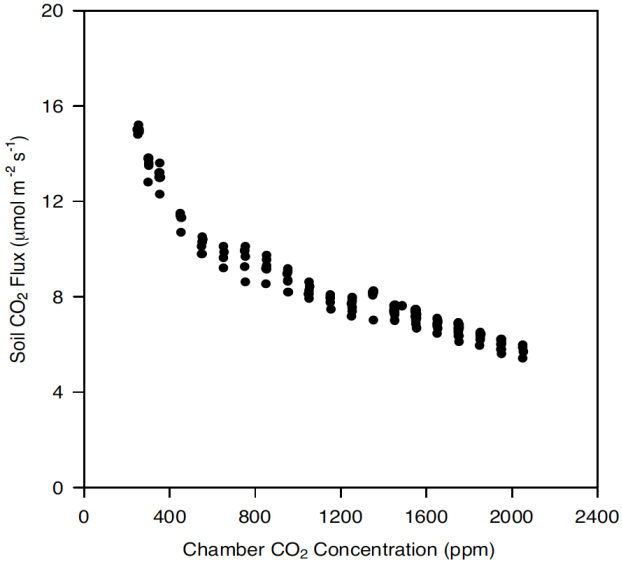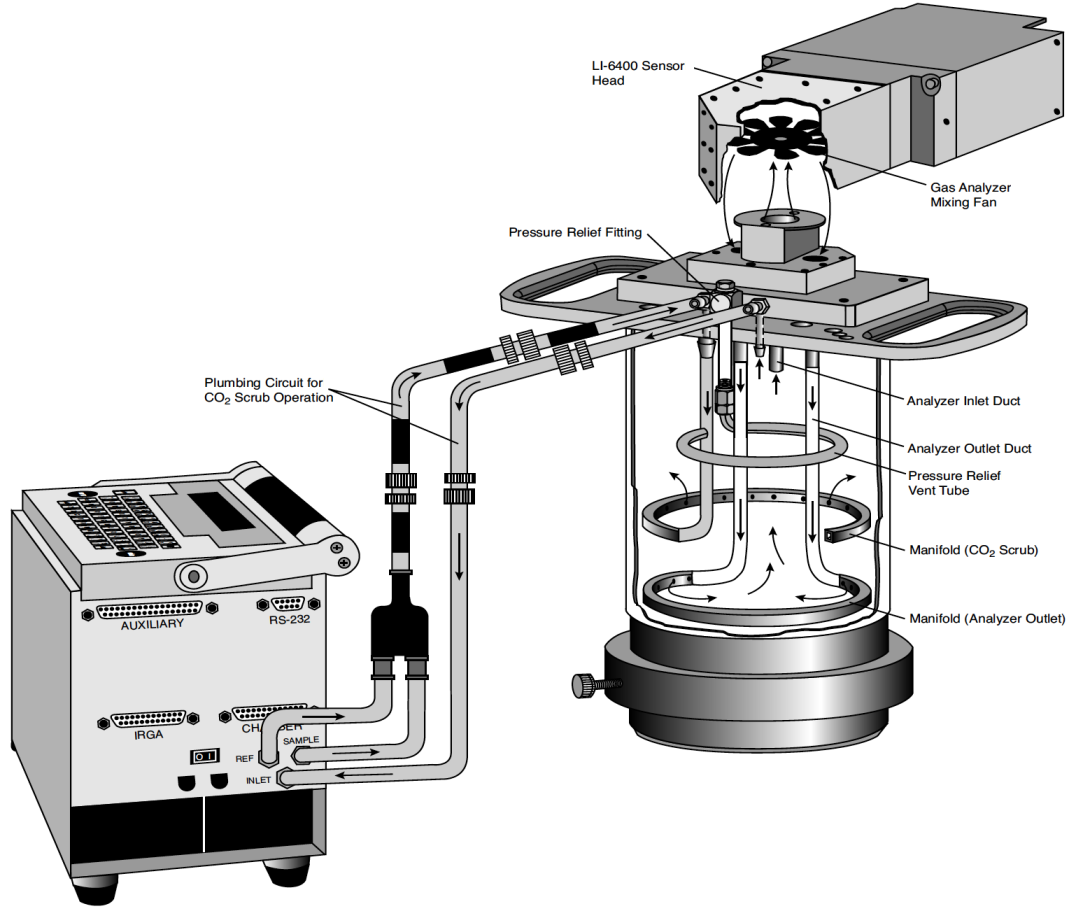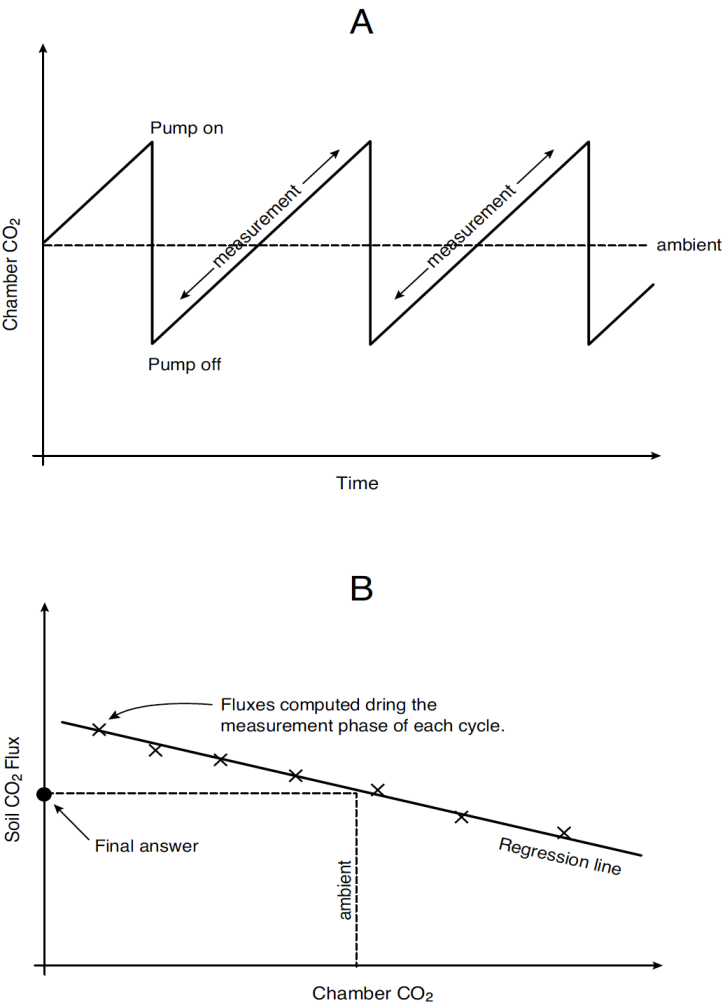Considerations
Soil carbon dioxide is primarily produced by root respiration, decay of organic matter, and activity of microbes. Rainwater can have direct effects as well, by displacing gas in soil pore spaces (enhancing CO2 flux at the surface), and by interacting with limestone soils. Also, rainwater itself carries some dissolved CO2 that can be released in the soil.
Thus, soil CO2 flux is dependent on soil temperature, organic content, moisture content and precipitation, and has a great deal of spatial variability. Soil CO2 flux is also extremely sensitive to pressure fluctuations. An unvented chamber will induce significant pressure increases just by closing. Soil water evaporation and heating of the air in the chamber head space also induces pressure increases in an unvented chamber. The 6400-09 Soil CO2 Flux Chamber is vented so that pressures inside and outside the chamber are in a dynamic equilibrium.
Soil CO2 flux measured using a chamber system is dependent on the CO2 concentration in the measurement chamber. This is illustrated in Figure 28‑1, which shows typical variations in measured soil CO2 flux when the chamber headspace CO2 concentration was allowed to rise. Healy et. al. (1996) used analytical and numerical models of gas diffusion to evaluate chamber headspace concentration influence on estimates of soil CO2 flux. They found that chamber-induced perturbations of soil-gas concentration gradients could result in substantial underestimation of soil CO2 flux (6 to 34% for a 30 minute measurement).
The LI-6400 Soil CO2 Flux System has been designed to minimize perturbation in the soil-gas concentration gradient. Before starting the measurement, ambient CO2 concentration at the soil surface is measured. Once the chamber is installed, the CO2 scrubber is used to draw the CO2 in the closed system down below the ambient concentration. The scrubber is turned off, and soil CO2 flux causes the CO2 concentration in the chamber headspace to rise (Figure 28‑2). Data are logged while the CO2 concentration rises through the ambient level. The software then computes the flux appropriate for the ambient concentration. This measurement cycle repeats for as many iterations as you select (Figure 28‑3).



Precautions
- Sun
- Keep the soil chamber shaded as much as possible to minimize heating.
- Wind
- If measurements are made on bare soil with no canopy, variation in the measured flux can occur due to dynamic pressure fluctuations at the pressure vent outlet caused by wind effects. The vent on the 6400-09 is shielded to minimize direct wind effects, but you may wish to shield the entire chamber from the wind.
- Rain
- If a thin upper layer of soil becomes saturated from short intense rainfall, a surface gas seal can form that causes CO2 concentration to increase below the saturated layer. A burst of CO2 may be released when the sharp edge of the chamber is inserted, causing excessively high flux measurements when in actuality the undisturbed flux is very small. Better measurements can usually be done with a collar (after the initial installation disturbance) if care is taken not to disturb the collar when setting the chamber onto it.
Reference
Healy, Richard W., R.G. Striegl, T.F. Russell, G.L. Hutchinson, and G.P. Livingston, 1996. Numerical Evaluation of Static-Chamber Measurements of Soil-Atmosphere Gas Exchange: Identification of Physical Processes. Soil Sci. Soc. Am. J. 60:740-747.
